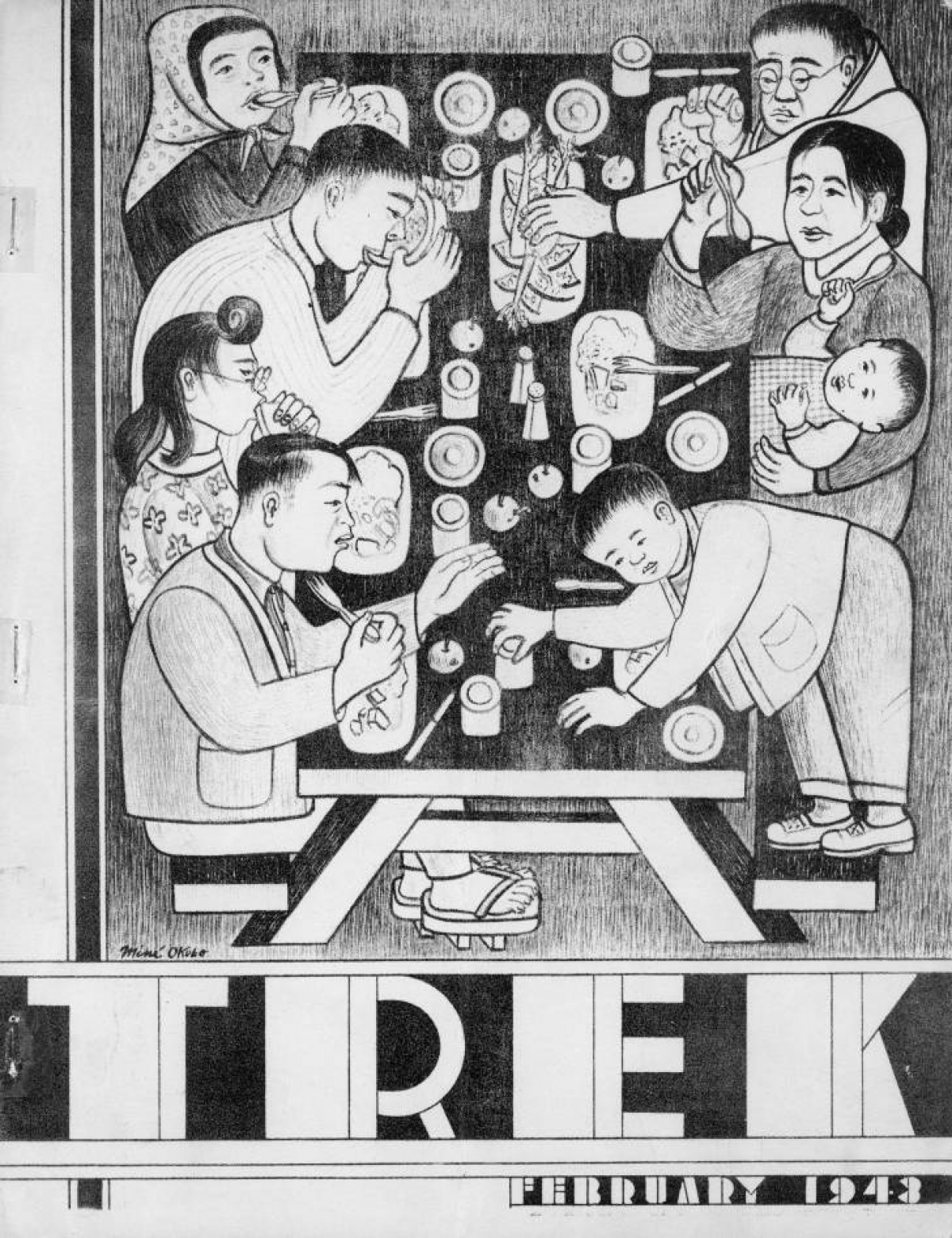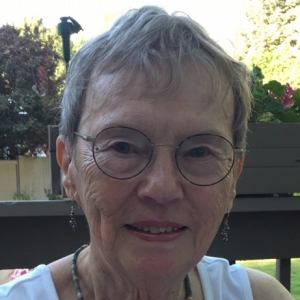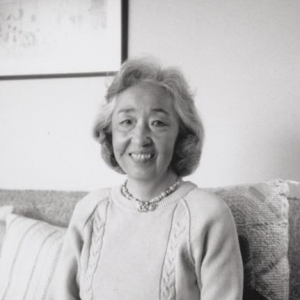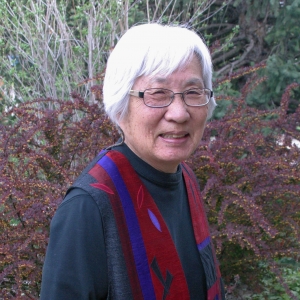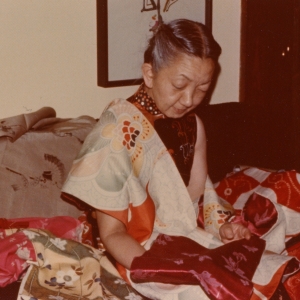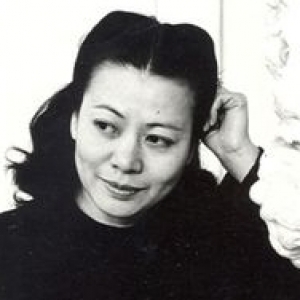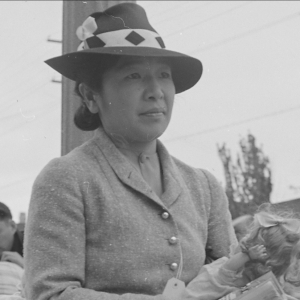During their forced removal from their homes, Issei (first-generation) and Nissei (second-generation) Japanese Americans were first housed in short-term detention facilities called “assembly centers,” usually requisitioned fair grounds or racetracks. They were then transferred to ten concentration camps run by the War Relocation Authority. One of these camps, Topaz, opened 16 miles northwest from Delta, at the edge of Utah's West Desert. During its operation between September 11, 1942 and October 31, 1945, Topaz incarcerated a total of 11,212 Japanese Americans.
Topaz became an unintentional and temporary center of the creative arts. A few notable prisoners at Topaz were the San Francisco-based artists who began Tanforan Art School after being relocated to the Tanforan Assemby Center located at the Tanforan Racetrack in San Bruno, California. Tanforan’s artists, including Miné Okubo, Chiura Obata, Hisako Hibi and Matsuburo “George” Hibi, taught art classes to more than 300 students at the center, and brought the art school along with them when they were relocated as a group to Topaz.
At Topaz, the Tanforan Art School merged with the Topaz Education Program and helped produce Trek and All Aboard, two literary and arts magazines published at Topaz. Both Trek and All Aboard featured the work of a wide range of Japanese American writers and artists, including the poet Toyo Suyemoto, writers Toshio Mori and Jim Yamada, and the journalist and activist Larry Tajiri. Miné Okubo, the art editor of Trek, produced many of the magazine’s covers and illustrations. Trek and All Aboard published a total of four issues between 1942 and 1943, all of which can be found on Utah State University’s Topaz Japanese-American Relocation Center Digital Collection.
The experience of family separation and incarceration at Topaz deeply shaped these Japanese American writers and artists, some of whom went on to publish or continue their creative work after being released. Toyo Suyemoto, called by Asian American writers a "major camp Poet and Nikkei Poet Laureate," wrote many moving poems about her incarceration experience, many published in Trek and All Aboard and later anthologized in influential Asian American poetry anthologies. Toshio Mori, a Northern Californian Nisei writer born in 1910, was the first Japanese American writer to publish a book of short stories in the United States, entitled Yokohama, California. Hisako Hibi, in her 2004 memoir Peaceful Painter: Memoirs of an Issei Woman Artist, includes paintings and entries from the journal she kept during her incarceration at Topaz. The writer and artist Miné Okubo not only drew or painted hundreds of camp scenes at Topaz, she also published a book Citizen 13660 about her experiences at Topaz. Finally, the award-winning writer Yoshiko Uchida, who as a young woman taught school at Topaz, published 34 books, including the children’s novels Picture Bride, Journey to Topaz, and a memoir entitled Desert Exile, a personal account of her family’s uprooting form Berkeley, California to Topaz.
A number of Utah writers have written about Topaz and Japanese American incarceration. These include playwright Matthew Ivan Bennett whose play Block 8 is set in Topaz, and Michael O. Tunnell who, along with George W. Chilcoat, wrote The Children of Topaz: The Story of a Japanese Internment Camp Based on a Classroom Diary (2011), a book of children’s nonfiction based on a diary kept by Lillian “Anne” Yamauchi Hori’s third grade class in Topaz. They also include Salt Lake resident Lily Yuriko Havey, who herself had been incarcerated at the Amache Relocation Center, and wrote and self-illustrated a novel about that experience titled, Gasa Gasa Girl Goes to Camp. Klancy de Nevers, another Salt Lake resident, wrote the nonfiction book The Colonel and the Pacificist: Karl Bendetsen, Perry Saito and the Incarceration of Japanese Americans During World War II, which is partly set in Tule Lake. While not set at Topaz, Havey's and de Nevers’ work, too, consider the long-term effects of incarceration on both Japanese American and American history.
The influence of Topaz on Japanese American and Asian American literature continues to be powerful, though the majority of literature involving Topaz has now been written by writers living outside the state, who have no other relationship to Utah. Many writers influenced by Topaz trace a specific family connection to the Utah concentration camp. San Francisco-based writer Brian Komei Dempster’s book of poetry, Topaz, for example, examines the legacy of transgenerational trauma caused by his Japanese American family’s separation and incarceration. He has also compiled the oral testimony of former internees in a compilation entitled, From Our Side of the Fence. Likewise, New York-based Julie Otsuka’s best-selling 2002 novel When the Emperor was Divine and Ruth Sasaki’s 1991 collection of short stories The Loom and Other Stories are both based on their specific families’ experiences being relocated to and incarcerated in Topaz.
Historians and writers are currently beginning to consider the little-told stories of LGBTQ Japanese Americans at Topaz and other incarceration camps. In his Concentration Camps on the Home Front: Japanese Americans in the House of Jim Crow, for example, Professor John Howard in part examines how camps such as Topaz allowed for an expanded, if still socially forbidden, opportunity for same-sex intimacy. His work has influenced San Francisco-based interdisciplinary writer and queer theorist Tina Takemoto, who wrote an experimental performance piece entitled Looking for Jiro Onuma, based on the archival materials of Jiro Onuma, a gay 19-year-old incarcerated at Topaz. The poet Kenji Liu, in turn influenced by Takemoto, also reimagines Jiro Onuma in a persona poem entitled “Gaman: Topaz Concentration Camp, Utah.”
During her time at Topaz, the artist Miné Okubo suggested that art would provide the incarcerated a form of resistance, saying, “We will survive if we forget the sands at our feet and look to the mountains for inspiration.”* Since its closure on October 31, 1945, Topaz has continued to inspire resistance and to influence generations of artists, all of whom wrestle with questions of identity and racial discrimination, immigration, terrorism, surveillance, and the curtailment of civil liberties, issues that remain as powerfully relevant today as they were in 1941.
* Leonard J. Arrington, The Price of Prejudice, reprinted ed. (Logan, UT: The Faculty Association, Utah State University, 1962; Delta, UT: The Topaz Museum, 1997), 27.

